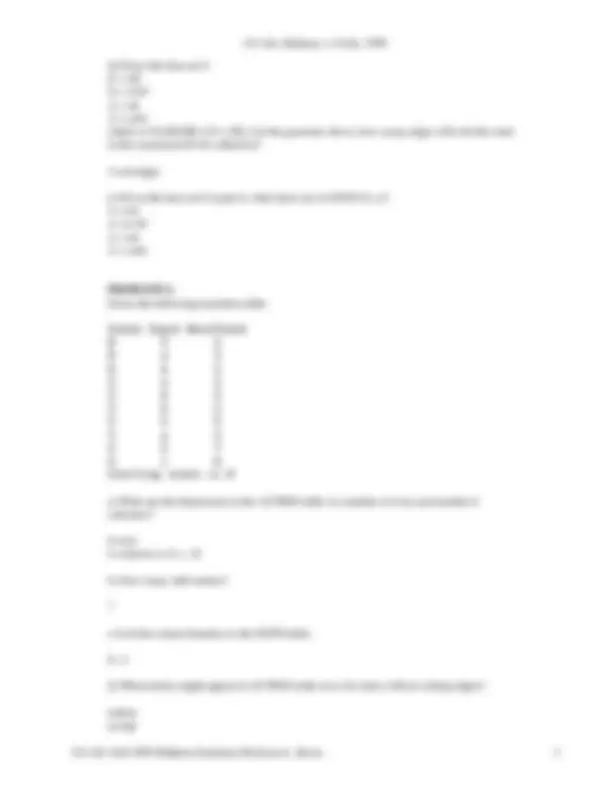




Study with the several resources on Docsity

Earn points by helping other students or get them with a premium plan


Prepare for your exams
Study with the several resources on Docsity

Earn points to download
Earn points by helping other students or get them with a premium plan
Community
Ask the community for help and clear up your study doubts
Discover the best universities in your country according to Docsity users
Free resources
Download our free guides on studying techniques, anxiety management strategies, and thesis advice from Docsity tutors
The solutions for the midterm exam of cs 164: introduction to compilers course at university of california, berkeley in fall 1999. It includes solutions for problems related to finite state automata, parse tables, grammars, lr parsing, and transition tables.
Typology: Exams
1 / 4

This page cannot be seen from the preview
Don't miss anything!



Answer the following TRUE/FALSE questions: All non-deterministic finite state automatons can be converted to a deterministic finite state automaton: TRUE An object-oriented program is easier to read and understand than a conventional procedural program: TRUE The class of the value assigned to the this variable in a method is the class within which the method is declared: FALSE A Java method signature does not include the return type: TRUE A transient instance variable in Java is not written to persistent storage if the object is output: TRUE The class of the Class object is Class : TRUE A regular expression can specify the set anbn^ where 0<n<5, that is {ab, aabb, ..., aaaabbbb}: TRUE A shift reduce parser performs reductions in the reverse order specified by a left-most derivation: FALSE The string aabb is a sentential form for the grammar S->ab | aSb: TRUE A JO99 variable has an l-value and r-value: TRUE An abstract syntax tree is derived from a parse tree by removing extraneous nodes and restructuring the tree: TRUE A handle is a simple phrase: TRUE Some JO99 objects do not have a class: FALSE The following finite state automation recognizes the laguage specified by the regular expression a*1a+: FALSE
State Input NextState 0 1 1 0 a 0 1 a 2 2 1 1 2 a 2 Staring state is 0
A context free grammar can be used to recongnize any context sensitive language: FALSE
Given the parse table and grammar:
| | b | a | $ || S | A | |-------------------------------------| | 0 | s3 | s2 | || 1 | 5 | | 1 | | |accept|| | | | 2 | r4 | s2 | r4 || | 4 | | 3 | | | r1 || | | | 4 | r3 | | r3 || | |
| 5 | s6 | | || | | | 6 | | s2 | || | 7 | | 7 | | | r2 || | |
r1: S->b r2: S->AbA r3: A->aA r4: A->a
a) Show a right-most derivation for the input aaba.
S->AbA->Aba->aAba->aaba
b) When parsing the input aaba, how many shifts will be performed?
4
c) Show the parse tree for aaba.
s /|
/ |
A b A /| | / | | a A a | | a
Given the grammar S->AcD A->ab|aAb D->d|Dd a) What is the language?
anbncdm n, m >=
b) Fill-in the following sets: FIRST(s) = {a} FIRST{A} = {a} FIRST{D} = {d} c) Fill-in the following sets: FOLLOW(S) = {$} FOLLOW{A} = {c, b} FOLLOW{D} = {d, $}
error (i.e. blank)
Posted by HKN (Electrical Engineering and Computer Science Honor Society)University of California at BerkeleyIf yo 4